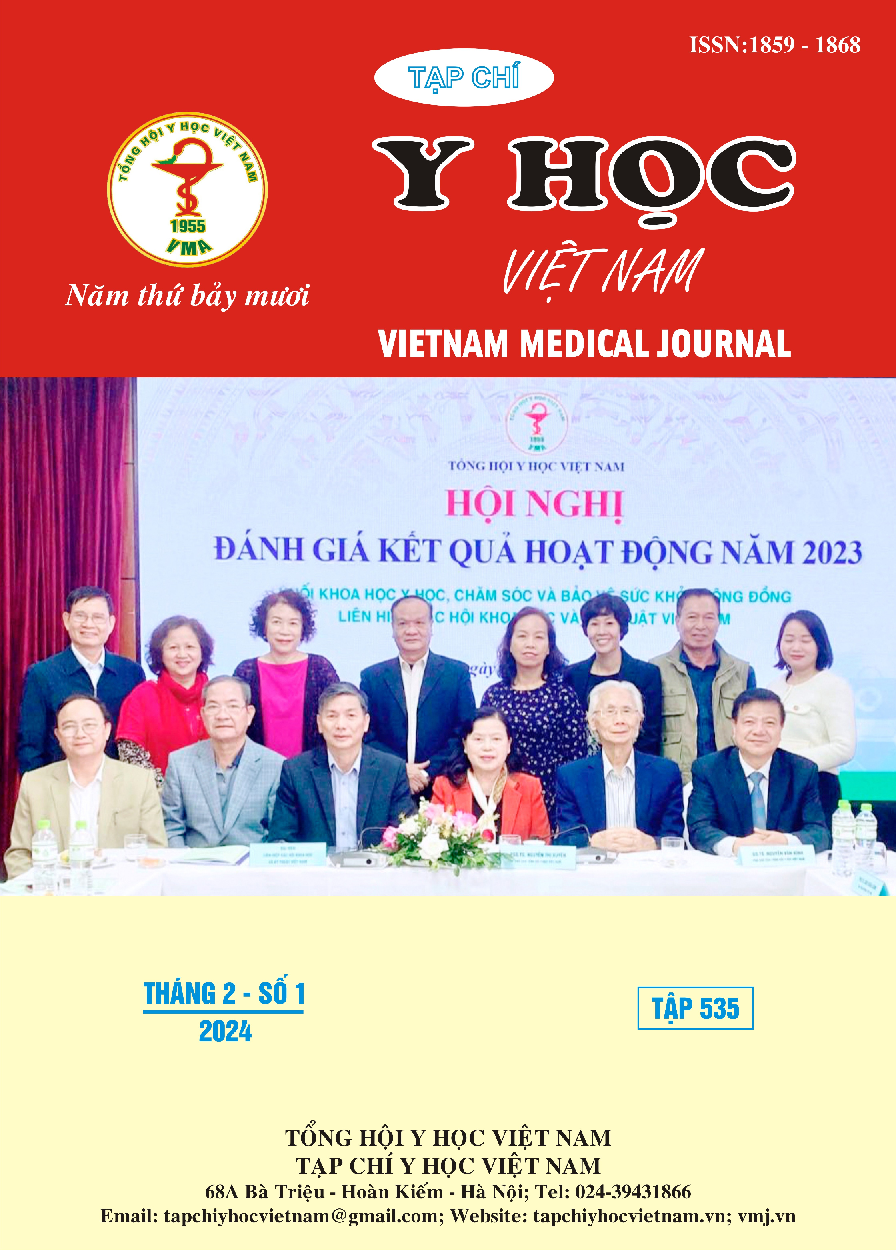INTRAVENOUS LIPID 20% EMULSION THERAPY IN THE TREATMENT OF ACUTE POISONING
Main Article Content
Abstract
Objective: to assess the use of 20% intravenous lipid emulsion (ILE) therapy in the treatment of acute poisoning. Subjects and methods: an observational study included 34 patients with acute poisoning who used ILE from January 2022 to August 2023 at the Poison Control Center of Bach Mai Hospital. Results: ILE therapy was indicated for poisoning of anesthetics, calcium channel blockers, antidepressants and pesticides poisoning; The severity according to PSS: moderate accounted for 29.4%, severe 67.6%, and fatal 2.9%. Indications of ILE were mainly hypotension (38.2%), unconsciousness (29.4%) and cardiac arrest 2.9%. 67.6% of ILE were used immediately in combination with other treatments, 26.5% were salvage therapy. 52.9% of ILE used the correct dose according to the regimen. Conclusion: the study showed the current status of using 20% intravenous lipid emulsion therapy in the treatment of acute poisoning patients at the Poison Control Center of Bach Mai Hospital.
Article Details
References
2. Rosenblatt, M.A., et al., Successful use of a 20% lipid emulsion to resuscitate a patient after a presumed bupivacaine-related cardiac arrest. The Journal of the American Society of Anesthesiologists, 2006. 105(1): p. 217-218.
3. Litz, R., et al., Successful resuscitation of a patient with ropivacaine‐induced asystole after axillary plexus block using lipid infusion. Anaesthesia, 2006. 61(8): p. 800-801.
4. Forsberg, M., et al., No support for lipid rescue in oral poisoning: A systematic review and analysis of 160 published cases. Human & Experimental Toxicology, 2017. 36(5): p. 461-466.
5. Smolinske, S., et al., Utilization of lipid emulsion therapy in fatal overdose cases: an observational study. Clinical Toxicology, 2019. 57(3): p. 197-202.
6. Türkdoğan, A.K., et al., Lipid Emulsion Therapy in Lipophilic or Hydrophilic Drug Intoxication: The Last Weapon in Our Arsenal. Eurasian Journal of Emergency Medicine, 2019. 18(2): p. 90-94.
7. Gitman, M. and M.J. Barrington, Local anesthetic systemic toxicity: a review of recent case reports and registries. Regional anesthesia & pain medicine, 2018. 43(2): p. 124-130.
8. Basiouny, S., et al., Intravenous lipid emulsion as an adjuvant therapy of acute antipsychotic poisoning: a randomized controlled trial. Ain Shams Journal of Forensic Medicine and Clinical Toxicology, 2022. 38(1): p. 19-32.
9. Mithani, S., et al., A cohort study of unstable overdose patients treated with intravenous lipid emulsion therapy. Canadian Journal of Emergency Medicine, 2017. 19(4): p. 256-264.
10. Cave, G., et al., LIPAEMIC report: results of clinical use of intravenous lipid emulsion in drug toxicity reported to an online lipid registry. Journal of Medical Toxicology, 2014. 10: p. 133-142.


